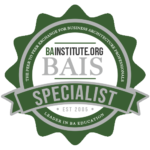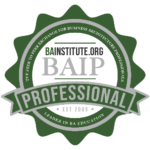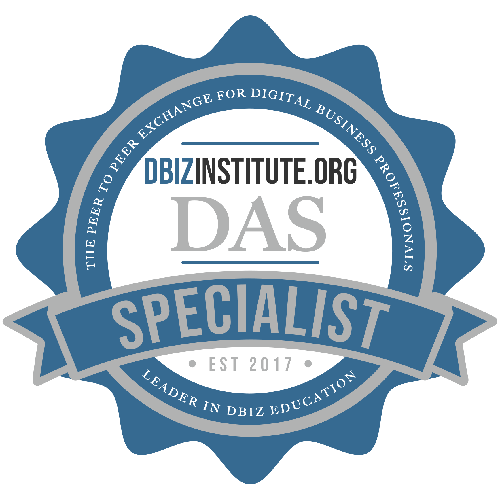Home / Resources
Resources
Discover a Wealth of BPM Knowledge and Expertise at BPMInstitute.org!

Governance is Not a Four Letter Word
At a recent client meeting, the Chief Architect arrived a few minutes late, clearly upset. When asked what was bothering him, he muttered “Governance is a four letter word”. I am sure that many readers have shared that sentiment at some time, but it needn’t be that way.
Organizations who have adopted BPM as their platform for IT development have an opportunity to both simplify and improve their IT Governance and Compliance processes. All of the advantages which BPM brings to your core business processes are just as applicable to IT Governance.

Leading Organizational Redesign with Business Architecture
Reorganization of a business is not easy. Following the usual process of organizational design, you work to identify the current organization, note the gaps and describe a process for getting to the new organization. That sounds easy enough in theory, but implementing the reorganization is not nearly as straight forward. Asking stakeholders what the problems are usually only gets you symptoms. Identifying gaps is difficult because if the organization knew there were gaps, they would have fixed them. Then you have those who abhor change who believe their area of the business works fine – it’s everyone else’s fault.
Getting Started

Transitioning to a World of Decisions
As the concepts of decision modeling and management increasingly move from theory to practice, it has been interesting to note how it is perceived and approached by both business and IT. Perhaps not surprisingly, my experience has shown this to be a smoother transition for business. This is something we should expect as it presents a more natural representation of the business for the business. The IT side has certainly had a variety of tools available in numerous platforms to support this approach and the emergence of the Decision Model and Notation (DMN) standard now brings a cohesive view across industries. However, it does seem to present a few challenges to IT in this early stage of evolution.

Win the Game with Metrics
I admit it; I waste hours a week playing video games. On my phone, laptop or tablet; on a train, bus or airplane; when I have time and when I don’t, I and millions like me find that the positive feedback from these games keeps us addicted. A silly banner pops up and says “Congratulations, you’re a winner!”, or tells you you’re still lagging behind the champion, and you just have to play again.

Before Launching Government Transformation, Establish a Culture of Innovation
“All employees must be directly involved, learning about innovation. And they must have direct experience with it. New governance gets managers more involved in the decision making…. Only when innovators operate with the credibility of leaders will innovation become a productive part of the everyday business.” – Craig Wynett, a key driver of P&G’s pre-eminence in innovation
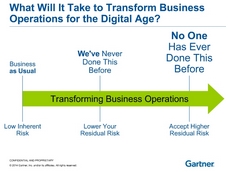
BPM Outlook: Gartner Outlines 2015 Trends
Digital Business: From Process Improvement to Driving Big Change
Facing continual digital disruption, companies are rethinking their business models and reinventing their processes to transform business operations for the digital age.
Traditional BPM has driven tremendous efficiencies and cost reductions. Now the challenge is to apply BPM to drive growth.
Key challenges are:

Literate Process Modeling
Thirty years ago, Donald Knuth introduced the notion of literate programming. He wrote “Instead of imagining that our main task is to instruct a computer what to do, let us concentrate rather on explaining to human beings what we want a computer to do.” His premise was that over the lifetime of any successful program, far more hours would be spent reading it for purposes of maintenance and enhancement than were originally spent creating it. Furthermore, most of this would be by people other than the original author. If this is true, a little more effort in documentation by the original author will be paid back many times. We believe these principles are even more important in Process Modeling than in traditional programming.

Leading Organizational Redesign with Business Architecture
Reorganization of a business is not easy. Following the usual process of organizational design, you work to identify the current organization, note the gaps and describe a process for getting to the new organization. That sounds easy enough in theory, but implementing the reorganization is not nearly as straight forward. Asking stakeholders what the problems are usually only gets you symptoms. Identifying gaps is difficult because if the organization knew there were gaps, they would have fixed them. Then you have those who abhor change who believe their area of the business works fine – it’s everyone else’s fault.
Getting Started

Metrics and Business Process
I learned the importance of metrics and predictive analysis from an unlikely source in an odd place — the McDonald’s near my college — yes, the place with the golden arches! When I started working there, I didn’t know about Ray Kroc or his revolutionary idea about portion control. I simply wanted to earn money to cover my car and insurance payments.
Everything was measured at this store, from how long the fries were blanched to how long burgers were grilled to the amount time food was allowed to wait in the warming area. In addition to the process measurements, the store’s managers and assistant managers were responsible for recording the day, the date, the weather, special events within a ten mile radius, hourly sales from each register, hourly numbers for each item sold, and amount of items sent to waste each hour.

Field Notes: Decision Analysis and Process Analysis
Business Decisions and Business Processes need to be analyzed and improved simultaneously for better business outcomes. Following are some practical notes from the field on the correct perspective for this.
1. Decisions are a network or a hierarchy, not a flow
Decision Analysis does not need a flow-based sequential thinking like Process Analysis. Unlike processes, decisions are evaluated in a network where a number of lower-level decisions are made to aggregate up to the main business decision of interest. This state-less decision can be plugged into a process with the process then flowing on down the time dimension.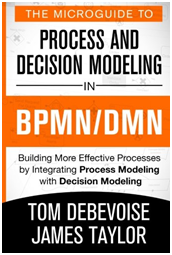
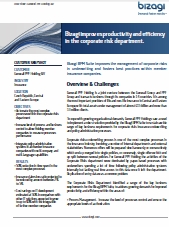
Case Study: 1 insurance company. 51 processes. 4 countries. 5 languages.
Generali PPF Holding embarked on an organization-wide business transformation to significantly boost productivity and efficiency in the area of Corporate Risks underwriting. Discover Generali’s BPM journey in this case study.
To cope with growing organizational demands, Generali PPF Holdings saw a need to implement a robust solution provided by the Bizagi BPM Suite to sustain a wide range of key business requirements for corporate risks insurance underwriting and policy administration processes.
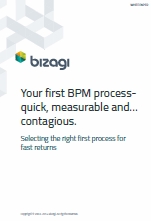
Your first BPM process – quick, measurable and… contagious
BPM programs live or die on the success of the pilot project, which in turn depends on choosing the right first process. Since BPM initiatives involve deep cultural changes, the pilot project has to deliver results that are:
- Quick: to gain management approval for wider rollout
- Measurable: to justify further investments
- Contagious: to trigger widespread user adoption
- Extensible: to enable the benefits to be felt across teams, departments and processes.
This whitepaper provides guidance on selecting the optimal business process (or group of processes) for a BPM pilot project. By taking this approach, project owners can be confident of a low-risk BPM initiative that generates sufficient momentum to kick off a successful companywide BPM program.

BPM and Complexity Reduction
There’s increasing attention and focus on reducing complexity. Leaders recognize that certain forms of complexity in their business, which do not add value to customers, involve unnecessary costs. From an IT perspective, as applications continue to grow in size and sophistication, the corresponding challenges in the integration of complex systems are perceived to non-value added drive costs.
Paying special attention to complexity through the application of business process thinking and BPM systems can be instrumental in reducing complexity that customers are unwilling to pay for.
Generally, customers don’t like complexity. But they do like choice and value. The challenge for many organizations is to see the business from the customer’s point of view and take action to reduce the non-value added component of complexity.

Capital Planning: Capability Maps, Value Streams and Conflicting Stakeholder Objectives
Business architecture provides a sound foundation for capital planning based on business strategies and goals in any enterprise. Figure-1 depicts relationship between value business units, value streams and capabilities. However, applying these concepts for capital planning, when working with stakeholders, could be challenging. Stakeholders from IT operations, business operations andsales tend to have different priorities & objectives. Finding a balance between varied priorities is as much an art, as it is science.
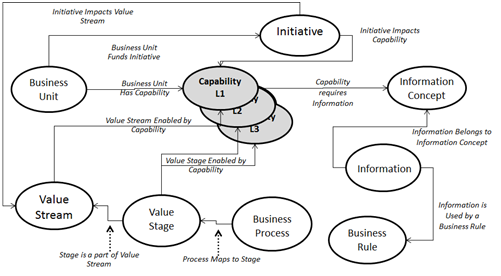
Source: A Guide to the Business Architecture Body of Knowledge (BIZBOK™) – Release 3.0, Part 5
Figure 1 – Business Architecture Knowledge Base Mapping

What Skills are Needed for BPM Success?
One of the most frequently asked questions (FAQs) on BPM involves the skills needed for BPM success. While most people understand the importance of modeling skills, there’s a lot more involved in succeeding with BPM and it goes beyond skills or aptitude to mental models or attitude.
Earlier this year, Gartner identified 15 skills critical to the success of any BPM project. As depicted in Figure 1, they elected to group these skills into three types of critical competency: transformational, operational and technical.
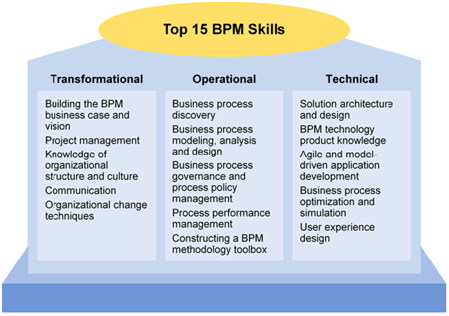
Figure 1. Top 15 Business Process Management Skills[i]

Discovering Decisions in Your Business
In previous articles we have discussed Business Decision Management, the role of decision management and decision modeling in reducing process complexity as well as the risks of focusing only on processes without considering decisions. At the heart of these articles is a focus on decisions – high volume, repeatable, operational decisions that can be identified, modeled and managed for improved business results.
Most organizations will initially identify decisions within their business processes – either finding tasks that are clearly decision-making tasks such as those handling validation, approval, calculations, assessments etc – or collapsing process complexity into a decision that was previously obscured by a nest of process gateways and conditions or rules.

Does Modern Technology Impede Modern Management?
The economy is undergoing accelerating, multidimensional changes, which are the result of the growing demand of customers for easier access to individualized products and services. The speed of those changes, along with their qualitative character and unpredictability, results in the insufficiency of current management principles. (D’Aveni 1994; Płoszajski, 2004) The precise characteristics of new order remain yet unknown, though it is already clear that organisations of this new type will be “slimmed down” to a flat structure, based to a much larger extent on the labour of groups, flexible through assigning rights to line workers, constantly adapting their activities to satisfy the requirements and expectations of their customers. To cope with such unpredictable and accelerating market and technology changes, use should be made of the full dynamism, knowledge and human potential existing in the company.

A Day in the Life of a Business Architect
Tuesday was a good day at the office, although nothing out of the typical. I attended two high profile meetings with the product management team and a joint product management and technology requirements definition meeting, received news of my promotion, presented a tool that our team built to solve a resource manager’s allocation problem, and got to work on a really cool proposal to map out a business process end-to-end on a single page of paper.
I always thought simplistically that my role as a business architect is to help bridge the gap between what the owners of the company want and what the rest of the organization delivers. I stand in between those who hold the purse and those who wield the hammer (or whatever your tool of choice may be) so I can better link the two to generate outstanding business results. I’m after business outcomes and so should everyone else in the organization, right? It’s that simple.

Design with the End (User) In Mind
Introduction
Stephen Covey advised us to “begin with the end in mind.” That would seem an obvious place to start whether we are designing a process, a product, or a software application. However, it’s surprising how many designs seem to have anyone but the end user in mind. In this piece we’ll take a look at several examples of where designs fall short, and suggest how good requirements practices can help produce sound designs.

Can You Build and Measure an Improvement Culture?
This is such a simple but such a critical question. And it has several critical elements:
Build – meaning this is going to take some time and it will start at one level and grow to another level.
Improvement – in other words we want to have an organization that wants to keep improving itself, which is necessary for any organization to succeed. If it doesn’t grow, it dies. But here the word is improvement – keep getting better, probably in several arenas.
Culture – the set of shared attitudes, values, goals, and practices that characterizes an institution or organization–a corporate culture could be focused on the bottom line
Let’s define success first. How would you know that you had an improvement culture? What would you measure and what would your score be?
Here are four determinants you could use:







